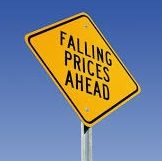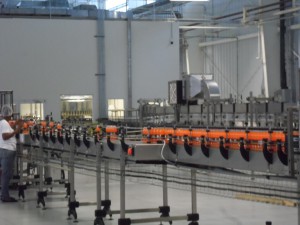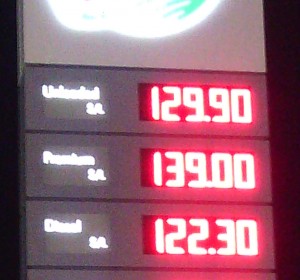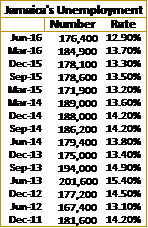 Prices declined for another month in Jamaica, according to data just released by the Statistical Institute of Jamaica (STATIN) but prices are still high than a year ago.
Prices declined for another month in Jamaica, according to data just released by the Statistical Institute of Jamaica (STATIN) but prices are still high than a year ago.
Statin stated that the All Jamaica Consumer Price Index declined for the second consecutive month as a negative 0.1 percent inflation rate was recorded for March 2018. The main contributor to this movement was the 1.0 percent fall in Food and Non-Alcoholic Beverages category, due to lower prices for agricultural produce resulting in a 4.3 percent reduction in index for the class Vegetables and Starchy Foods. Transportation recorded a decline of 0.4 percent for the period, resulting from lower fuel prices. Upward movement of a 3.2 percent in Housing, Water, Electricity, Gas and Other Fuels, primarily resulting from higher electricity, water and sewage rates help to negate the above mention declines. As at March 2018, the calendar year-to-date inflation was negative 0.2 percent and the movement in the index for the last twelve months is 3.9 percent.
Deflation for Jamaica’s Q1
Food prices pressure November’s inflation

Food category was main contributor to November’s inflation.
According to STATIN, the “movement was mainly the result of a 1.2 percent rise in the index for the heaviest weighted division Food & Non-Alcoholic Beverages. Transportation moved up by 1 percent due to higher petrol prices and airfares, and Education increasing by 0.2 per cent, as a result of an increase in the cost of CSEC examination fees. The impact of the month’s inflation was however tempered by the 0.9 percent fall in the index for the division ‘Housing, Water, Electricity, Gas and Other Fuels, with lower cost for electricity being the main contributing factor.”
Year-to-date inflation is 4.6 percent, while inflation for the past 12 months is up 4.9 percent and the fiscal year-to-date movement was 3.6 per cent.
The relatively large revaluation of the Jamaican dollar against the US dollar since September, will have a moderating impact on inflation going forward.
Inflation eases in July
 Inflation in Jamaica eased a bit in July to 0.6 percent compared to June 0.07 percent, according to data released by the Statistical Institute of Jamaica (Statin).
Inflation in Jamaica eased a bit in July to 0.6 percent compared to June 0.07 percent, according to data released by the Statistical Institute of Jamaica (Statin).
“For the second consecutive month the division Food and Non-Alcoholic Beverages recorded the highest movement of 1.2 per cent. This was primarily due to an upward movement in the class ‘Vegetable and Starchy Foods up by 3.8 per cent,” Statin stated and the Transport division rose 0.3 percent. Housing, Water, Electricity, Gas and Other Fuels decreased by 0.3 percent a result of lower electricity rates.
Inflation for the calendar July come out at 2.7 percent, while the movement over the last twelve months runs at 4.5 percent, slightly more than the 4.4 percent at June.
Jamaica’s Inflation spikes in June

‘Vegetables and Starchy Foods’ had a strong impact on price movement in June.
The Consumer Price Index for June 2017 increased by 0.7 percent, represented the highest monthly movement for the 2017 to date, a release from the Statistical Institute of Jamaica (Statin) stated.
The rate of inflation for the calendar year-to-date is 2.1 percent, 4.4 percent over June last year, while the fiscal year-to-date rate is 1.1 percent.
According to Statin, the sharp increase in June was due mainly to increases in the index for the three heaviest weighted divisions: Food and Non-Alcoholic Beverages up by 1.1 per cent, Transport 0.4 percent and Housing, Water, Electricity, Gas and Other Fuels up by 0.4 percent. The Food and Non-Alcoholic Beverages division was impacted by the flood rains in mid-May, which disrupted the supplies of agricultural products and resulted in a 3. 7 percent rise in Vegetables and Starchy Foods. The increase in the Transport division was influenced by higher prices for petrol. Increased electricity rates was chiefly responsible for the upward movement in the division Housing, Water, Electricity Gas and Other Fuels, as the class Electricity, Gas and Other Fuels rose by 1.1 per cent. However, the overall movement of the division was tempered by the 1.3 percent decline in the class Water Supply and Miscellaneous Services Related to the Dwelling. Other notable increases were recorded for Restaurants and Accommodation Services, 0.6 percent and Recreation and Culture, 0.4 percent.


 Economic activity in Jamaican in the March 2017 quarter was virtually zero, according the data put out by
Economic activity in Jamaican in the March 2017 quarter was virtually zero, according the data put out by 
 The Jamaican economy grew 1.4 percent for 2016, preliminary estimates by the Statistical Institute of Jamaica, (STATIN) the government body charged with gathering and reporting on economic data shows.
The Jamaican economy grew 1.4 percent for 2016, preliminary estimates by the Statistical Institute of Jamaica, (STATIN) the government body charged with gathering and reporting on economic data shows.  Agriculture, Forestry & Fishing, increased by a strong 17.1 percent and Construction by just 0.6 percent. STATIN said “the Agriculture, Forestry & Fishing industry was positively impacted by favourable weather conditions which resulted in higher crop yields, while the Construction industry benefitted from hotel expansion and renovation as well as the construction of office spaces to facilitate the expansion of Business Process Outsourcing activities.
Agriculture, Forestry & Fishing, increased by a strong 17.1 percent and Construction by just 0.6 percent. STATIN said “the Agriculture, Forestry & Fishing industry was positively impacted by favourable weather conditions which resulted in higher crop yields, while the Construction industry benefitted from hotel expansion and renovation as well as the construction of office spaces to facilitate the expansion of Business Process Outsourcing activities.
 According to the Statistical Institute of Jamaica the government body charged with collecting and collating economic data on the country. ”There were 1,186,900 employed persons in July 2016 which was 39,400 more than the 1,147,500, recorded in July 2015. The industry group Wholesale & Retail, Repair of Motor Vehicle & Equipment had the largest gain (13,300) in employment moving from 220,200 in July 2015 to 233,500 in July 2016. For the same period the industry group Agriculture, Hunting, Forestry & Fishing had the largest decline (14,000), moving from 205,200 to 191,200. The industry group Construction had the largest increase in the number of males (10,200) and the groups Manufacturing (7,100) and Other Community, Social and Personal Service Activities (7,100) accounted for the largest increase in the number of females in the period.”
According to the Statistical Institute of Jamaica the government body charged with collecting and collating economic data on the country. ”There were 1,186,900 employed persons in July 2016 which was 39,400 more than the 1,147,500, recorded in July 2015. The industry group Wholesale & Retail, Repair of Motor Vehicle & Equipment had the largest gain (13,300) in employment moving from 220,200 in July 2015 to 233,500 in July 2016. For the same period the industry group Agriculture, Hunting, Forestry & Fishing had the largest decline (14,000), moving from 205,200 to 191,200. The industry group Construction had the largest increase in the number of males (10,200) and the groups Manufacturing (7,100) and Other Community, Social and Personal Service Activities (7,100) accounted for the largest increase in the number of females in the period.”





